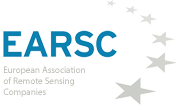I hope that many of you may already have seen the report we have published concerning the economic benefit of using satellite imagery (SAR) to support the ice services in Finland and Sweden? If you have not, you can find the report on our web-site; I think it is quite easy to read as we tell the story of how the ice-breakers work during the Baltic winter.
It should be the first in a series of such cases where we taker a single product and trace its impact through the chain of users ending up with the citizens; hence the title of the story “Satellites Benefiting Citizens".
The basic story about the use of the imagery by the ice-breakers is quite well-known but I am unaware of any work which has gone into the detail of what is going on. Indeed, the idea stems from the large socio-economic studies carried out by PwC, Booz etc for the EC which start top-down and look at the gross impact of the use of EO technology. Such an approach can never get inside the value-chain and look in detail as we have done. The two methodologies are complementary.
The results have been really surprising. I started out with the idea that we would take a value-chain which would show maybe a few €100k of benefit (or maybe a few €m) and that since there are thousands of EO products, simple extraction would lead to many €b of benefits in total. Hence I was surprised to find the benefit to be up to €100m per annum and even this number I think is conservative.
We were hindered in our work by a lack of an overall analysis of the benefits which are generated by the ice-breaking services. Next year a new model (developed under the WinMOS project) should be in-place which will allow these benefits to be calculated and which will support investment programmes in Finland and Sweden to renew their ice-breaker fleet - where some of the existing ships are 50 years old. What is then the added-value of the satellite imagery? Well that was the challenge we had to master and where many of the assumptions lie. We should like to go back and revisit the case when the WinMOS model is complete; yet the messages without that detail are clear.
Satellite imagery, in this case SAR, is benefiting the Finnish and Swedish economies by between €24m to €116m a year. This large range is a result of the assumptions which we have been forced to make which no one has yet challenged. We have deliberately set our assumptions to be conservative to avoid such challenges and further analysis could well show that the overall benefit is higher. The main impact is on keeping ports open and allowing factories to keep working and communities to work throughout the year. Of course this could happen without the imagery but not in the same way and certainly not with the same efficiency. The result is extendable to other countries around the Baltic and to other areas where sea-ice blocks ports in the winter period.
We were very grateful for the direct support of experts in the two countries for the time they gave us. For our methodology to work, we need that so as to be able to dig into the processes and understand exactly what is happening and where the imagery is having an impact. It implies that the process should be operational and in use for a few years. We currently are extending our work to further cases and would be very interested to have proposals for new ones to look at. Please get in contact if you know of one that we could analyse.

This page has no comments.